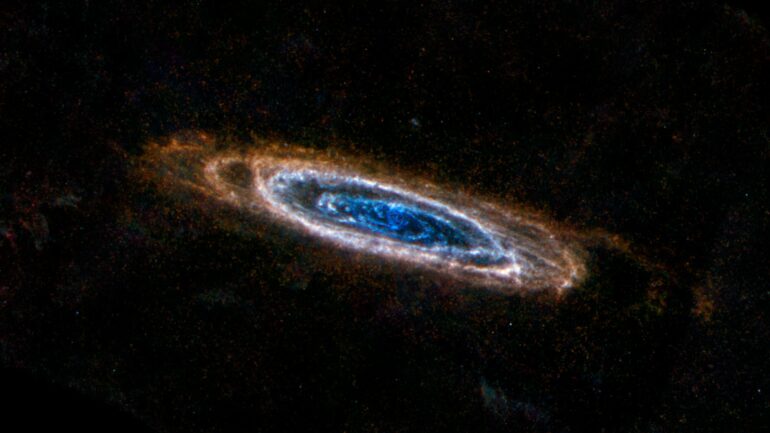Astronomy has a blind spot in the area of far-infrared radiation compared to most other wavelengths. A far-infrared space telescope can only utilize its full sensitivity with an actively cooled mirror at temperatures below 4 Kelvin (-269 ℃). Such a telescope doesn’t exist yet, which is why there has been little worldwide investment in the development of corresponding detectors.
In 2004, SRON decided to break this cycle and invest in the development of Kinetic Inductance Detectors (KIDs). Now, researchers from SRON and TU Delft have achieved the highest possible sensitivity, comparable to feeling the warmth of a candle on the moon from Earth. Their study appears in Astronomy & Astrophysics on September 6th.
In recent years we have been spoiled with the most beautiful pictures from telescopes working with X-rays, infrared, radio and visible light. To name a few: the image of the black hole in M87, the Hubble Extreme Deep Field or the baby picture of a planetary system. But in one wavelength area, astronomy is relatively blind: the far-infrared, especially at wavelengths between 300 μm and 10 μm.
The Earth’s atmosphere blocks most of this radiation for ground-based telescopes, while space telescopes often have a temperature such that they blind their detectors with the far-infrared radiation they emit themselves. With so much noise, there is little incentive to commit large sums of money to the development of more sensitive far-infrared detectors. And with a lack of sensitive detectors, governments won’t allocate funds to super-cooled noiseless telescopes.
Breakthrough
At the start of this century, SRON decided to break the pattern and invest in the development of Kinetic Inductance Detectors (KIDs). That decision is now bearing fruit. Together with the TU Delft, SRON researchers have almost perfected the technology by making it sensitive enough to see the permanent background radiation of the universe.
“An even higher sensitivity would have no use,” says Jochem Baselmans (SRON/TU Delft). “Because you will always be limited by the noise of the universe’s background radiation. So our technology provides telescopes builders such as NASA and ESA with far-infrared detectors as sensitive as possible. We already see two proposals submitted to NASA for a super-cooled telescope. Those are much more expensive than relatively warm telescopes, but our KIDs make it worth it.”
Terahertz gap
KIDs help astronomy to close the terahertz gap, named after the frequency of far-infrared light. Astronomers are now missing out on light produced by stars in the far-away, young universe, leaving a gap in our knowledge of stellar evolution. Moreover, the terahertz gap is a unique opportunity for adventurous astronomers to dive into the unknown.
“You don’t know what you don’t know. The Hubble Deep Field was created by pointing the Hubble telescope at a pitch-black piece of the sky with seemingly nothing in it. Afterwards, thousands of galaxies emerged, from an area smaller than one percent of the full moon,” says Baselmans.
The sensitivity that the researchers achieved with their KIDs can be best described by a hypothetical candle on the moon. Imagine standing on Earth—or floating just above the atmosphere—and holding up your hand to feel the candle’s warmth. Seems like a futile exercise? Not for a KID. It is even ten times more sensitive than that. With an integration time of a second, a KID can detect as little as 3*10-20 watts.
More information:
J.J.A. Baselmans et al, Ultra-sensitive Super-THz Microwave Kinetic Inductance Detectors for future space telescopes, Astronomy & Astrophysics (2022). arxiv.org/abs/2207.08647
Provided by
SRON Netherlands Institute for Space Research
Citation:
Far-infrared detector KID reaches highest possible sensitivity (2022, September 6)
